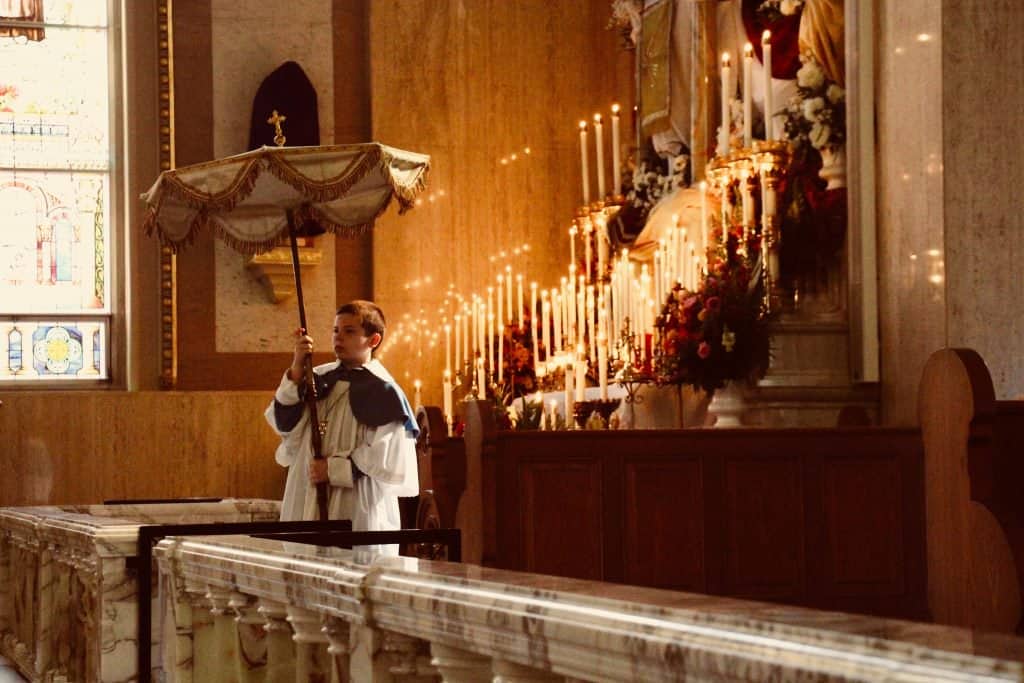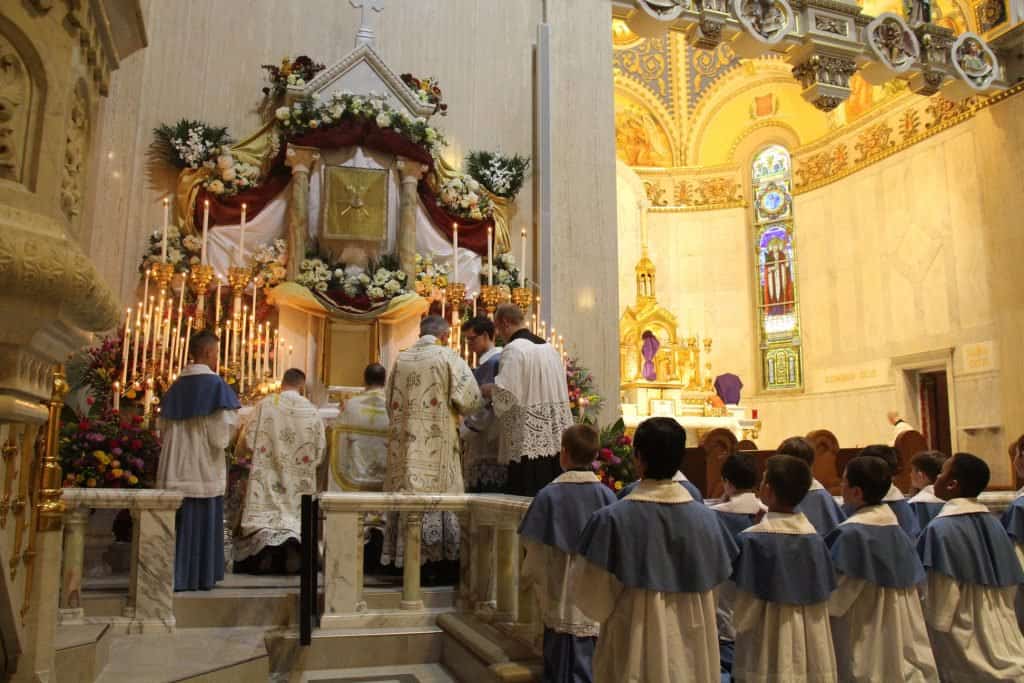Here’s a list (not exhaustive) of some reflections on the appeal of the traditional Latin Mass, particularly among younger Catholics. I am not asserting that these are exclusive to the traditional liturgy (there certainly are reverent novus ordo liturgies out there) but these qualities do seem to be present in a more consistent, uniform and coherent way in the traditional liturgy.
1. Coherence: What is sacred and holy should be accompanied with reverence and mystery. The Eucharist is the Real Presence of Christ, so liturgical rites and customs should reflect that. Casualness, banality and informality do not square with the presence of God.
2. Identity: The traditional liturgy provides Catholics with a distinct counter-culture and frame of reference that is markedly set apart from the mainstream.
3. Beauty: Beauty and order are related. Beauty and virtue are also related. The world is in the throes of moral disorder and chaos. That chaos that is disorienting. Traditional norms, applied to the most basic pillars of civilization, are rejected while dangerous novelty is elevated as the new normal. Abortion is celebrated as a “right” and the basic structure of the family is mocked and redefined. Those defending fidelity to standard moral norms are labeled “haters” and “bigots.” The traditional Latin Mass is an oasis of serenity, order, beauty and harmony: the intricate vestments, incense, beautiful chants/polyphony, attention to detail with the rites and rituals, the reverence centered on the Blessed Sacrament, etc. Everything comes together in a beautiful, seamless manner. In today’s world, souls are thirsting for this.

4. Authenticity: At many parishes, the goal seems to be to give a Catholic version of the mainstream culture, or a Catholic version of a Protestant-inspired service. At Latin Mass parishes, there is no desire/need to give a Catholic version of anything derivative of the mainstream. What’s offered is simply Catholic, anchored in natural development, not rupture.
5. Stability: Many young people long for stability and reliability. The Latin Mass doesn’t change or accept the premise of “change is good.” Its stability reminds us of God’s unchanging nature. There is no confusion or controversy about “participation” or roles. Laymen don’t take on roles that have historically been left to the ordained ministry. “Participation” does not mean, “Do what the priest does.”

6. Challenge: The traditional Latin Mass requires greater focus to learn the ropes. Most young people appreciate that because they know they aren’t being pandered to, but instead challenged, called to something higher. The homilies at Latin Mass parishes challenge us with substance, not drown us in sentimentalism.
7. Transcendence over “welcome”: The “feeling welcome” factor is given too much weight at your standard parish. As a result, liturgy is often centered around people’s feelings and made shallow. Particular teachings that may be unpopular are often downplayed or ignored because they might make people feel “uncomfortable.” An atmosphere of transcendence, sacred distance and thresholds is actually more appealing and alluring than a vague, formless space with no orientation.

8. Silence and stillness: The traditional liturgy is deeply linked to sacred silence, allowing for contemplative prayer. The world is saturated with noise and activity. At many parishes, let’s be honest, silence is all but extinct. Many, perhaps without even being aware of it, long for spaces of silence.
9. Masculinity and complementarity: Yes, the priesthood is reserved to men who are called to it. In a particular way, the order, structure and precision of the traditional Latin Mass is deeply appealing to boys and young men who may be considering the priesthood. “Altar girls” are not in the sanctuary with altar boys. Saccharine liturgy, which places heavy emphasis on feelings, and usually is accompanied with sappy, effeminate hymns, is deeply unappealing to men (and just about everyone).

10. Bypass exhausting liturgical battles: Debates about “altar girls,” Communion in the hand, bad music, ad orientem vs. versus populum, are non-issues with the traditional Latin Mass. We don’t have to fight tooth and nail for minor improvements that may or may not survive the next pastor, and that are usually approximations of what already exists untouched at the Latin Mass. It’s all simply there, allowing us to focus. No distractions, no battles, no stress.
(Thanks to Patrick, a parishioner at Saint Stanislaus in Milwaukee, for the amazing photos of the parish’s liturgical life.)

